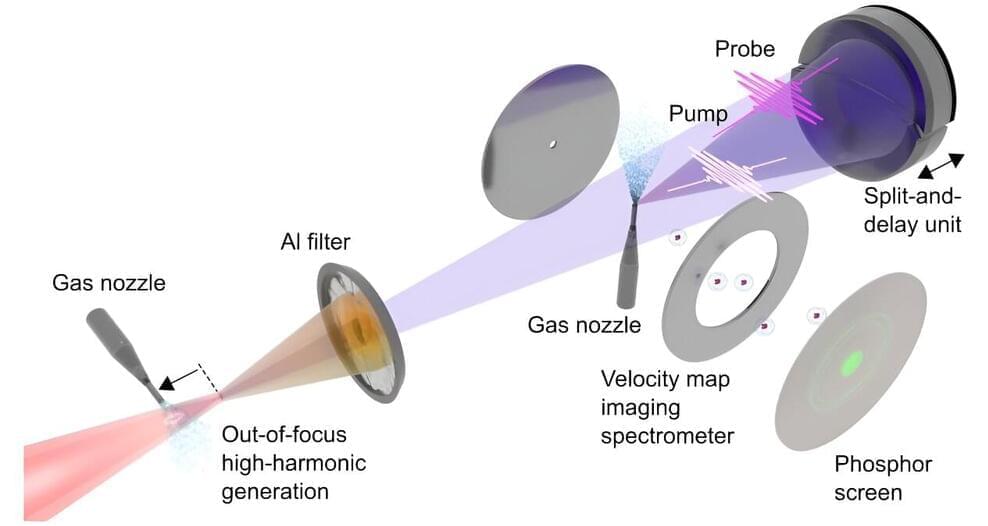A team of researchers from the Max Born Institute in Berlin has, for the first time, demonstrated attosecond-pump attosecond-probe spectroscopy (APAPS) at a repetition rate of 1 kilohertz. This became possible by the development of a compact, intense attosecond source using an out-of-focus generation geometry. The approach opens new avenues for the investigation of extremely fast electron dynamics in the attosecond regime.
The first generation of attosecond pulses (1 attosecond corresponds to 10-18 seconds) at the turn of this century has enabled unprecedented insights into the world of electrons. For their pioneering work, first leading to the demonstration of attosecond pulses in 2001, Anne L’Huillier, Pierre Agostini, and Ferenc Krausz were awarded the Nobel Prize in Physics in 2023.
Current attosecond techniques, however, come with an important drawback: To be able to record a movie in a pump-probe experiment, an attosecond pulse typically has to be combined with a femtosecond pulse (1 femtosecond corresponds to 10-15 seconds) whose optical cycles (a few femtoseconds long) is used as a clock with attosecond resolution. This constitutes a limitation for the investigation of electron dynamics on attosecond timescales.
